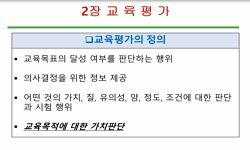목적 : 본 연구는 문항반응이론에 근거한 라쉬분석을 적용하여 학령기 아동을 위한 활동 참여 평가도구의 타당도를 검증하고자 하였다. 연구방법 : 학령기 아동 495명을 대상으로 활동 참여 ...
http://chineseinput.net/에서 pinyin(병음)방식으로 중국어를 변환할 수 있습니다.
변환된 중국어를 복사하여 사용하시면 됩니다.
- 中文 을 입력하시려면 zhongwen을 입력하시고 space를누르시면됩니다.
- 北京 을 입력하시려면 beijing을 입력하시고 space를 누르시면 됩니다.
https://www.riss.kr/link?id=A105245704
- 저자
- 발행기관
- 학술지명
- 권호사항
-
발행연도
2018
-
작성언어
Korean
-
주제어
라쉬분석 ; 작업치료 ; 참여 ; 타당도 ; 평가 ; 학령기 아동 ; Assessment ; Occupational therapy ; Rasch analysis ; School aged children ; Validity ; Participation
-
등재정보
KCI등재
-
자료형태
학술저널
- 발행기관 URL
-
수록면
119-132(14쪽)
-
KCI 피인용횟수
3
-
비고
학회 요청에 의해 무료로 제공
- DOI식별코드
- 제공처
-
0
상세조회 -
0
다운로드
부가정보
국문 초록 (Abstract)
목적 : 본 연구는 문항반응이론에 근거한 라쉬분석을 적용하여 학령기 아동을 위한 활동 참여 평가도구의 타당도를 검증하고자 하였다. 연구방법 : 학령기 아동 495명을 대상으로 활동 참여 평가도구를 실시하였다. 평가된 자료는 라쉬분석을 사 용해 항목과 대상자의 적합도, 항목 난이도, 평정척도, 분리신뢰도를 분석하고 최종적으로 요인분석을 통 해 항목의 영역을 분류하였다. 결과 : 495명의 학령기 아동 중 16명이 부적합 대상자로 나타났다. 부적합 대상자를 제외한 479명의 아동 을 대상으로 항목의 적합도를 분석한 결과 19개 항목이 부적합 항목으로 판정되었다. 항목의 난이도 분 석에서는 ‘야구하기’ 항목이 가장 어려운 항목으로 나타났으며, ‘목욕/샤워하기’가 가장 쉬운 항목으로 나 타났다. 평정척도 분석결과 6점 척도보다는 3점 척도가 더 적합한 것으로 나타났으며, 대상자에 대한 분 리신뢰도는 .95, 항목에 대한 분리신뢰도는 .99로 분석되었다. 최종적으로 탐색적 요인분석을 통해 8개 영역, 30개 항목으로 분류하였다. 결론 : 라쉬분석을 적용하여 학령기 아동을 대상으로 활동 참여 평가도구의 타당도를 입증하였다. 추후 연구에서는 3점 척도를 사용하여 평가도구를 재구성하여 참여를 측정하는 다른 측정도구와의 상관관계를 통해 공인타당도를 입증하고, 아동의 활동 참여에 영향을 미치는 요인을 분석할 필요가 있다.
다국어 초록 (Multilingual Abstract)
Objective: The purpose of this study was to verify the validity of the Activity Participation Assessment(APA) for school age children. Methods: The subjects were 495 school aged children. The validity of the APA was verified using Rasch analysis to in...
Objective: The purpose of this study was to verify the validity of the Activity Participation Assessment(APA) for school age children. Methods: The subjects were 495 school aged children. The validity of the APA was verified using Rasch analysis to investigate the persons and items fitness, the distribution of item difficulty, separation reliability, and the appropriateness of the rating scale. Finally, the items were categorized using exploratory factor analysis. Results: The result of Rasch analysis showed that 16 out of 495 school aged children were not fit unidimensionality. Out of 83 items, 19 items were determined to be unsuitable items. Of the appropriate items, the most difficult item was ‘play the baseball’, and the easiest item was ‘bath/shower’. A three-point rating scale of the APA was found to be more appropriate than the original six-point rating scale. The separation reliability of subjects and items was each .95 and .99. The result of exploratory factor analysis revealed 8 factors consisting of 30 items. Conclusion: The validity of APA was verified using Rasch analysis. Further research needs to prove the concurrent validity of the APA with a three-point rating scale and to analyze the factors that influence the participation of children.
목차 (Table of Contents)
- 국문초록
- Ⅰ. 서론
- Ⅱ. 연구 방법
- 1. 연구대상
- 2. 자료수집 기간 및 방법
- 국문초록
- Ⅰ. 서론
- Ⅱ. 연구 방법
- 1. 연구대상
- 2. 자료수집 기간 및 방법
- 3. 연구 도구
- 4. 분석방법
- Ⅲ. 연구 결과
- 1. 적합도 판정
- 2. 항목 난이도
- 3. 평정척도 분석
- 4. 분리신뢰도
- 5. APA 검사에 대한 탐색적 요인분석
- Ⅳ. 고찰
- Ⅴ. 결론
- References
- Abstract
- Appendix
참고문헌 (Reference)
1 김세연, "학령기 아동을 위한 활동 참여 평가도구(Activity Participation Assessment)의 개발" 대한작업치료학회 21 (21): 13-23, 2013
2 Sung, T. J., "Understanding and applying of item response theory" Kyoyookbook 2016
3 Ji, E. R., "Theory and practice of Rasch model" Kyoyookbook 2000
4 Berg, C., "The preschool activity card sort" 26 : 143-151, 2006
5 Lunz, M. E., "The effect of rater severity on person ability measure: A Rasch model analysis" 47 : 311-317, 1993
6 Nilsson, A. L., "Scoring alternatives for FIM in neurological disorders applying Rasch analysis" 111 : 264-273, 2005
7 Rosenblum, S., "Reliability and validity of the children's leisure assessment scale" 64 : 633-641, 2010
8 Kim, S. Y., "Reliability and validity of the activity participation assessment for school-age children in Korea" 28 : 33-42, 2016
9 Whiteford, G., "Reflections on a renaissance of occupation" 67 (67): 61-69, 2000
10 Hobart, J. C., "Rating scales as outcome measures for clinical trials in neurology: Problems, solutions, and recommendations" 6 : 1094-1105, 2007
1 김세연, "학령기 아동을 위한 활동 참여 평가도구(Activity Participation Assessment)의 개발" 대한작업치료학회 21 (21): 13-23, 2013
2 Sung, T. J., "Understanding and applying of item response theory" Kyoyookbook 2016
3 Ji, E. R., "Theory and practice of Rasch model" Kyoyookbook 2000
4 Berg, C., "The preschool activity card sort" 26 : 143-151, 2006
5 Lunz, M. E., "The effect of rater severity on person ability measure: A Rasch model analysis" 47 : 311-317, 1993
6 Nilsson, A. L., "Scoring alternatives for FIM in neurological disorders applying Rasch analysis" 111 : 264-273, 2005
7 Rosenblum, S., "Reliability and validity of the children's leisure assessment scale" 64 : 633-641, 2010
8 Kim, S. Y., "Reliability and validity of the activity participation assessment for school-age children in Korea" 28 : 33-42, 2016
9 Whiteford, G., "Reflections on a renaissance of occupation" 67 (67): 61-69, 2000
10 Hobart, J. C., "Rating scales as outcome measures for clinical trials in neurology: Problems, solutions, and recommendations" 6 : 1094-1105, 2007
11 King, G. A., "Planning successful transitions from school to adult roles for youth with disabilities" 34 : 193-216, 2005
12 Henry, A. D., "Pediatric interest profiles: Surveys of play for children and adolescents" Therapy Skill Builders 2000
13 Law, M., "Participation! Every child's goal" 1 : 10-12, 2000
14 Forsyth, R., "Participation in childhood" 28 : 277-279, 2002
15 Mandich, A. D., "Paediatric Activity Card Sort(PACS)" CAOT Publications ACE 2004
16 Linacre, J. M., "Optimizing rating scale category effectiveness" 3 (3): 85-106, 2002
17 American Occupational Therapy Association, "Occupational therapy practice framework: Domain & process 2nd Edition" 62 : 625-683, 2008
18 Townsend, E., "Occupational therapy language: Matters of respect, accountability and leadership" 65 : 45-50, 1998
19 American Occupational Therapy Association, "Occupational Therapy Practice Framework: Domain and Process" 56 : 609-639, 2002
20 Coster, W., "Occupation-centered assessment of children" 52 : 337-344, 1998
21 World Health Organization, "International classification of functioning, disability, and health" 2001
22 Pierce, D., "How can the occupation base of occupational therapy be strengthened?" 50 (50): 1-2, 2003
23 Engel-Yeger, B., "Differences in patterns of participation between youths with cerebral palsy and typically developing peers" 63 (63): 96-104, 2009
24 Velozo, C. A., "Developing meaningful fear of falling measures for community dwelling elderly" 80 : 662-673, 2001
25 King, G., "Children's Assessment of Participation and Enjoyment (CAPE) and Preferences for Activities of Children(PAC)" Harcourt Assessment 2004
26 Bond, T. G., "Applying the rasch model: Fundamental measurement in the human sciences" Lawrence Erlbaum Associates 2007
27 Trombly, C., "Anticipating the future: Assessment of occupational function" 47 : 253-257, 1993
28 Chang, L., "A psychometric evaluation of 4-point and 6-point Likert-type scales in relation to reliability and validity" 18 : 205-215, 1994
29 King, G., "A life needs model of pediatric service delivery" 22 (22): 53-77, 2002
동일학술지(권/호) 다른 논문
-
- 대한작업치료학회
- 한대성
- 2018
- KCI등재
-
복합중재 프로그램이 경도 알츠하이머병 치매환자의 인지기능 및 도구적 일상생활수행능력에 미치는 영향
- 대한작업치료학회
- 함민주
- 2018
- KCI등재
-
- 대한작업치료학회
- 임경민
- 2018
- KCI등재
-
- 대한작업치료학회
- 송아영
- 2018
- KCI등재
분석정보
인용정보 인용지수 설명보기
학술지 이력
| 연월일 | 이력구분 | 이력상세 | 등재구분 |
|---|---|---|---|
| 2027 | 평가예정 | 재인증평가 신청대상 (재인증) | |
| 2021-01-01 | 평가 | 등재학술지 유지 (재인증) |  |
| 2019-03-01 | 학술지명변경 | 외국어명 : Journal of Korean Society of Occupational Therapy -> Korean Journal of Occupational Therapy |  |
| 2018-01-01 | 평가 | 등재학술지 유지 (등재유지) |  |
| 2015-01-01 | 평가 | 등재학술지 유지 (등재유지) |  |
| 2011-01-01 | 평가 | 등재학술지 유지 (등재유지) |  |
| 2008-01-01 | 평가 | 등재학술지 선정 (등재후보2차) |  |
| 2007-01-01 | 평가 | 등재후보 1차 PASS (등재후보1차) |  |
| 2005-01-01 | 평가 | 등재후보학술지 선정 (신규평가) |  |
학술지 인용정보
| 기준연도 | WOS-KCI 통합IF(2년) | KCIF(2년) | KCIF(3년) |
|---|---|---|---|
| 2016 | 0.78 | 0.78 | 0.83 |
| KCIF(4년) | KCIF(5년) | 중심성지수(3년) | 즉시성지수 |
| 0.84 | 0.86 | 0.929 | 0.12 |




 eArticle
eArticle 코리아스칼라
코리아스칼라






